roaming around romania
- Sherry Brecher
- Oct 23, 2023
- 4 min read
Romania is a country that is often overlooked as a travel destination, despite its rich history, diverse landscapes, affordability and many myths and legends.
Its capital, Bucharest, architecturally experienced its heyday between the First and Second World Wars, when French-inspired designers transformed it into a grand city. A good portion of the Belle Époque buildings were destroyed by World War II bombings and many more by the 7.2 magnitude earthquake in 1977. In the 1980's, dictator Nicolae Ceaușescu undertook a demolition and rebuilding program to create a Socialist capital, resulting in mostly rectangular, concrete blocks, devoid of decoration or individuality. Since the fall of the Communist regime, in 1989, the city has evolved, but scars from the past remain - many in the form of eyesore structures.
As Bucharest continues to emerge from its Soviet times, it still is not a conventionally beautiful city, but what it lacks in aesthetics it makes up for in grit, determination, edgy spirit and a vibrant nightlife. I'd recommend spending a short while here before dashing off to find Dracula in Transylvania.
BUCHAREST
Stay
Housed in the former building of Romania’s most influential bank during the late 19th century, the five-star Marmorosch Hotel is expansive and opulent. It features 217 rooms, four ballrooms, a pair of bars (be sure to have a drink in the Vault Bar), a fitness center and a spa with an indoor pool. It's located on the edge of Old Town, just 30-minutes from the airport.
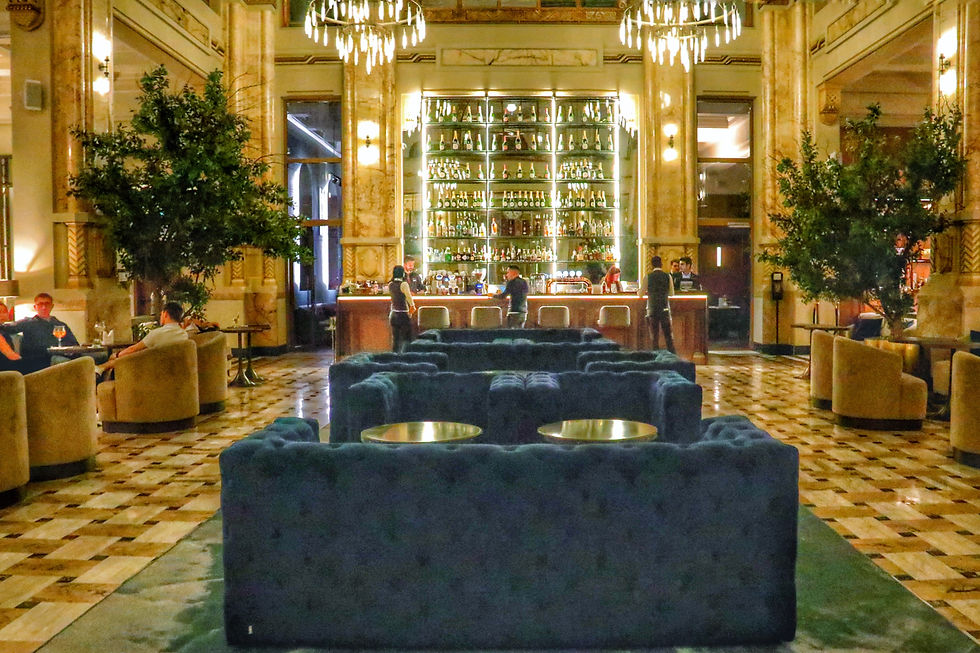
Sightsee
Bucharest's pedestrian 'Old Town' is one of the youngest Old Towns in the world, with renovations only completing in 2011. What is now a touristy, nightlife-infused hub of Eastern Europe was a derelict and dangerous district of Romania’s capital at the turn of the 21st century. It's full of bachelor parties, cafes, pubs, clubs, restaurants and shops.
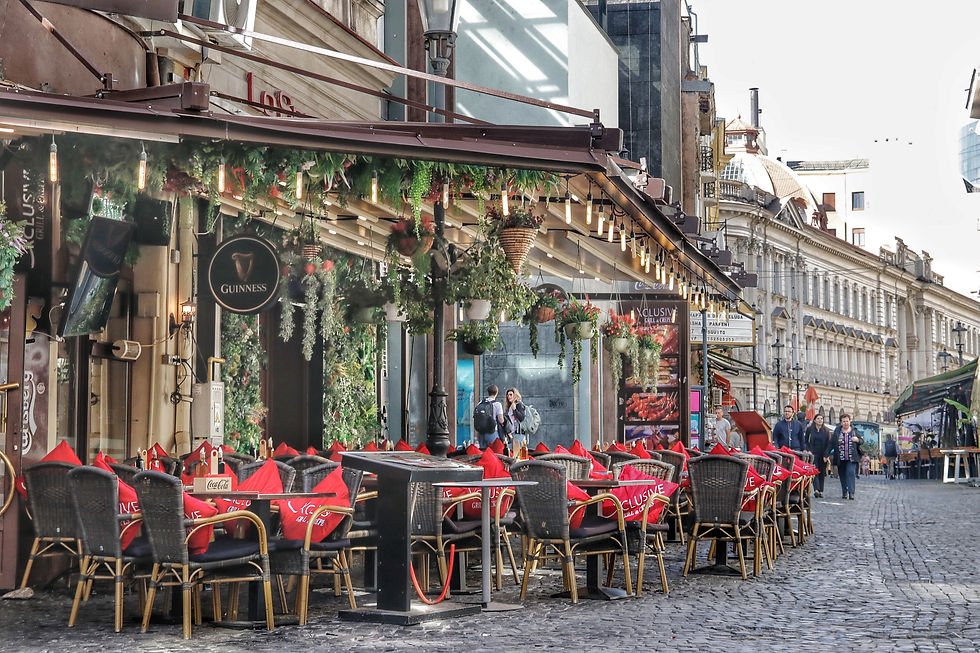
You won't be able to miss the city's most notorious landmark - the Casa Poporului (also known as the People's House or People's Palace). It is the second largest administrative building in the world, after the Pentagon. One-sixth of Bucharest's land area was cleared, and 40,000 residents displaced, to make way for this building. It measures 365,000 square meters and contains 1,100 rooms. This colossal structure was commissioned by Nicolae Ceaușescu to reflect communist values. He was executed before it was finished though, and, in an ironic twist, this oversized symbol of communism became the headquarters of Parliament, a key democratic institution.
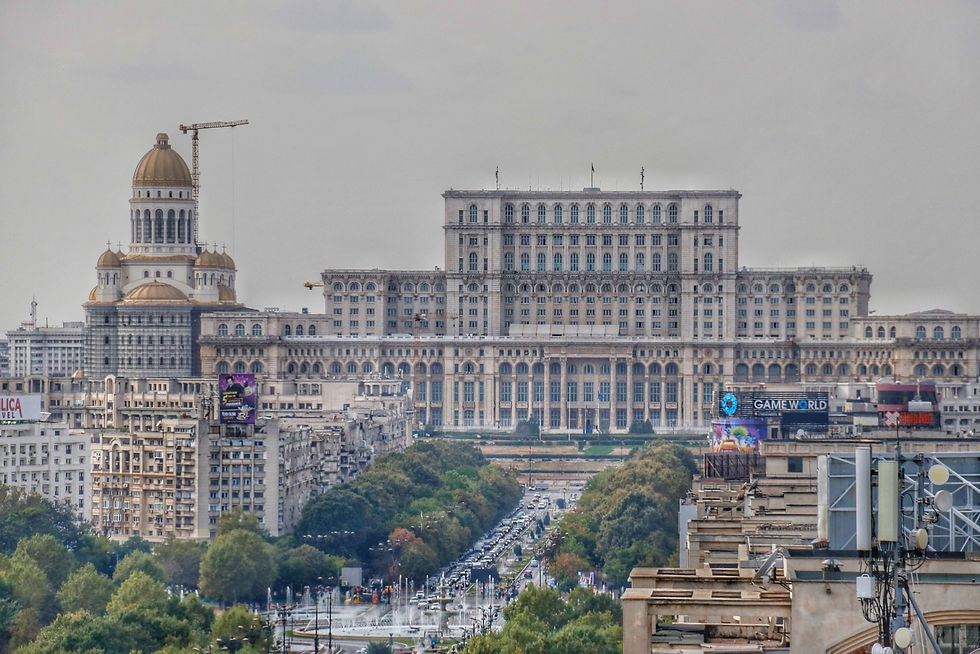
Bulevardul Unirii (Union Boulevard), which was constructed at the same time as the Casa Poporului, connects the Palace with Unirii Square. Be sure to visit the Urban Fountains, at night, to witness the Water Symphony. The show runs every Friday, Saturday and Sunday between May and October.
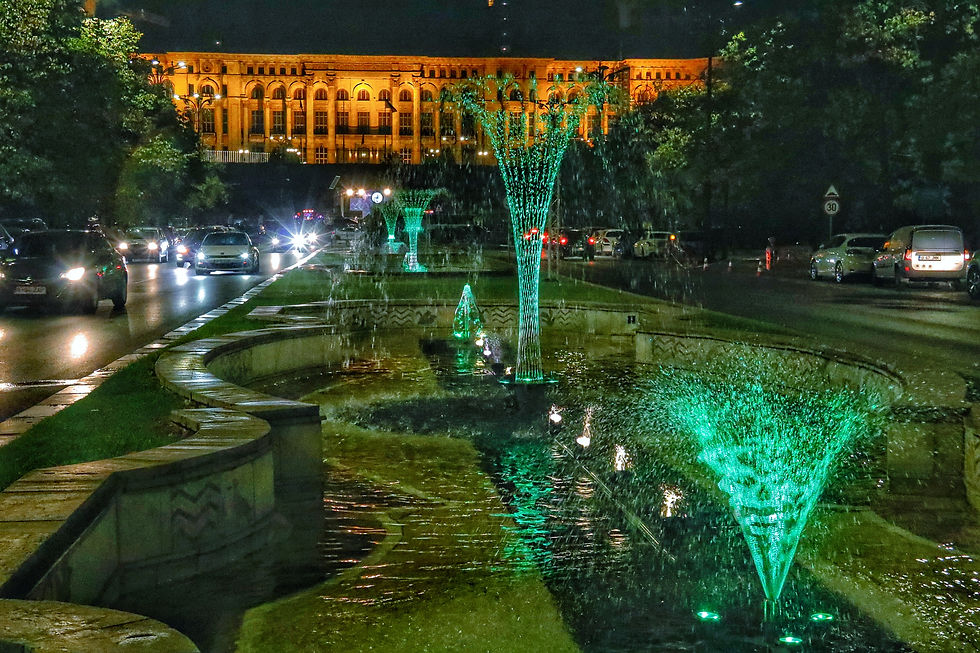
Consume
If you are looking for traditional Romanian cuisine, stop by Caru’ cu bere for a meal. It is the oldest restaurant in Bucharest and its atmosphere is authentic. The establishment is known for its richly decorated interior, its large portions and live music/dancing.

If you want a bird's-eye view of Bucharest, grab a cocktail at Amethyst Sky Bar (atop the Union Plaza Hotel).
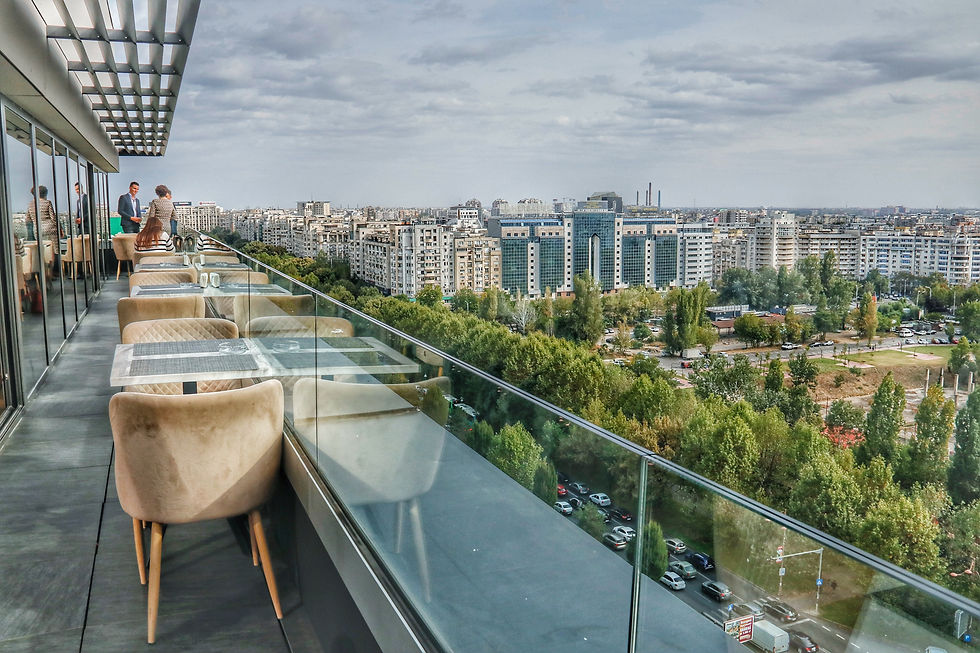
TRANSLYVANIA DAY TOUR
Your tour will start with a 7:30am pick up at Hilton Garden Inn Bucharest Old Town. It's about a two-and-a-quarter-hour drive to your first stop: Peles Castle. Nestled at the foot of the Bucegi Mountains, in the picturesque town of Sinaia, Peles Castle is a masterpiece of German new-Renaissance architecture. Commissioned by King Carol I in 1873 and completed in 1883, this castle served as the summer residence of Romania's royal family, until 1947. It boasts 160 rooms, all adorned with the fine European artwork, paintings, chandeliers and stained-glass. Each room is decorated in a different theme.
From Sinaia, you'll motor on for about another hour, to Brasov (a city in the southern Transylvania region of Romania). There you can see the Black Church (it's not actually black, but its exterior was somewhat blackened by a fire in 1689) and then you'll have lunch in the cute Old Townhall Square.
Another 30-minutes further into Transylvania will bring you to Bran Castle, where you can experience all the history, myths and intrigue of Count Dracula - a fictitious character created by author Bram Stoker, in 1897. Vlad III Draculea also known as Vlad the Impaler (Vlad Tepes in Romanian) was the historical figure whom the literary character was loosely based upon. Vlad was a brutal, sadistic leader famous for torturing and killing his enemies, mainly by impalement. Because Bran Castle is the only castle in all of Transylvania that actually fits Stoker’s description of Dracula’s Castle, it is known throughout the world as Dracula’s Castle.
KNOW BEFORE YOU GO:
Getting Around: People drive on the right-hand side of the road. The roads are in very good condition. You can use Bolt and Uber ride-hailing apps to get around Bucharest easily and cheaply.
Electrical: You'll need standard European plugs/adaptors in Romania (two round prongs).
Tipping: Tips are not included on bills and servers like to remind their patrons. It's become expected that tourists leave small tips - 10–15%.
Drinking Water: Tap water is drinkable.
Currency: Although Romania is in the EU, it has not adopted the euro. They still use the Romanian leu or lei as their currency. Banknotes come in denominations of 1, 5, 10, 50, 100, 200 and 500 although the 200 and 500 RON notes are seldom used.
Homeless: Romania have a high rate of homeless. Don’t engage with the beggars, as they can become quite aggressive.






















Comments